Environmental
Management
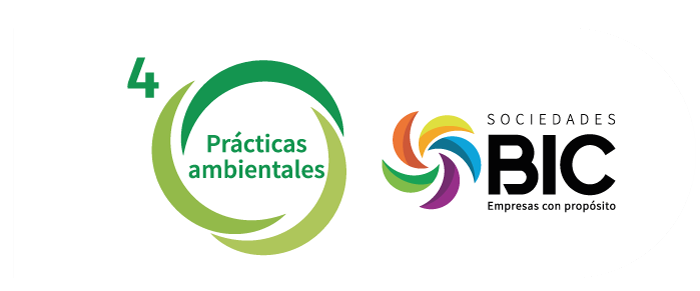
5.2. Environmental Management
E - Build a greener future
The Company has implemented the Environmental Management System based on the ISO 14001:2015 standard, through which it ensures compliance with the environmental requirements applicable to the operation, risk control and significant environmental issues, footprint management resulting from the telecommunications network deployment processes, etc., all of this under a strict standard with objectives and clearly defined goals that have been monitored over the past 14 years, thus achieving continuous improvement in the company’s environmental management.
The purpose of the Environmental Management System is to ensure a responsible deployment of the network with the environment at a national level in order to reduce the impact generated by the operation, besides this, to be efficient with all the resources used, such as energy and fuels, thus minimizing the carbon footprint on the planet.
Telefónica Movistar’s Environmental Management System has 6 Environmental Objectives, designed under two approaches, the first one associated to the mitigation of environmental impacts and the second one to the prevention of fines and penalties. The axes are: Resource Management, Energy and Climate Change, Waste Management, Responsible Network Deployment, compliance with legal requirements, and continuous improvement.
The Company adapts to global trends and is a leader in waste management sector, aligned to the circular economy strategy not only nationally but worldwide, on the other hand, Telefónica Movistar promotes in its Partners and contractors the responsible management of the environment in order to reduce its impact.
Each year, the evaluation of environmental issues is performed by analyzing the life cycle as well as the interaction with the administrative, technical and commercial processes or activities of the Company at national level, through this evaluation we identify those significant environmental aspects, the impact they generate on the environment and defines the operational controls for each of them, thus, by the end of 2022, we have identified impacts on soil and atmosphere due to the generation of hazardous waste and CO2 issues, it was set operational controls and monitoring indicators such as the prioritization of waste disposal for recovery and reduction of fuel consumption in operations.
These measures are related to the implementation of working groups with critical Partners for the environmental management system, monitoring of proper waste management, implementation of energy efficiency projects, definition of indicators and establishment of climate change metrics, purchase of certificates of origin, reduction of fuel consumption in the operation and fleet, implementation of circular economy, preparation and response to environmental emergencies, availability of spill kits, preventive and corrective maintenance, among others.
Telefónica has a corporate environmental
policy that establishes the environmental
guidelines and commitments for all the
group’s operators.
This policy is based on three converging objectives:
- Risk management and legal environmental compliance.
- Improvement of internal eco-efficiency.
- Promotion of digital solutions to support customers facing major environmental challenges which affect the entire society.
- This Policy sets out the principles that guide the Company worldwide and locally to support and improve its environmental performance.
Management of environmental programs
Telefónica has focused its management on the preservation of the environment and the reduction of CO2 emissions and therefore it has defined clear goals to reduce emissions consistent with the development of products and services, growth, and expansion of the network.
The climate action plan frames the quantification of Greenhouse Gas (GHG) emissions and defines the objectives and actions for the Company’s activities.
The energy consumption (electricity, fuels, refrigerant gases, etc.) are reported and quantified annually, and the carbon footprint is calculated and verified by an external entity, which in 2022 was AENOR.
In relation to the management of waste electrical and
electronic equipment at the national level, the
company has a campaign in all experience centers
nationwide for the return of unused cell phones and
accessories, thus seeking to recover the components
and minimize the impact on the environment. Likewise,
the return of modems and decos by customers assists in
the re-use of this equipment into the operation,
reducing the use of materials for the manufacture of
new equipment and decreasing the waste generated by
the services delivered to the customer’s
premises.
Eco Rating
In February 2022, Eco Rating was launched, a label that shows the environmental impact of handsets in a simple and clear way. It includes a score on a scale of 1 to 100 that evaluates how sustainable is the handset. The higher the score, the more respectful the phone is for the planet.
Eco Rating is designed to help customers make more informed and sustainable purchasing decisions, encourage suppliers to reduce the environmental impact of their devices, and align the telecommunications industry in improving transparency and reducing environmental impact.


Papyrus Project
With our Papiros document manager, we aim to be a digital company within the client’s reach, simplifying processes and reducing the time needed to request copies of documents, since it is the repository of the company’s commercial system, we provide storage support to more than 38 million documents which can be consulted online, in addition, during 2022 we implemented the correspondence and messaging modules that allow to the employee to manage the reception of documents and deliveries from a single place, since the system is responsible for managing the documents according to their retention time, thus complying with current storage regulations.
But this is not the only benefit that the Papiros tool provides to the personnel, since the system also allows the electronic signature of documents as significant as salary increases, telework agreements and the assignment of supply resources, becoming a tool that is part of the company’s digital ecosystem, enabling the company to perform procedures in an agile way from the comfort of the personnel’s home.
Climate change
(GRI Content 201-2)
Climate change affects the global business strategy of the Company due to the direct impact and its associated risks and opportunities. The energy and climate change strategy drives long-term value creation through effective risk management and making the most of opportunities.
Telefónica Movistar Colombia has established specific targets and indicators for the operation that align the efforts made by the Company with the targets on decarbonization set to limit global warming below 1.5 °C in line with the Science Based Targets initiative (SBTi). These indicators are monitored on a quarterly basis and include, among others, the inventory of emissions and carbon footprint, detailed monitoring of electricity and fuel consumption, and the progress of advanced projects; once the risk associated with climate change is determined, the relevance is assessed since they do not indicate a significant impact according to Telefónica’s risk assessment methodology and due to the actions previously implemented that enable an effective risk control.
To determine the risks of climate change in the operation of Telefónica Movistar Colombia, a specific methodology has been established to determine the impact of each risk taking into consideration two main focus areas: the physical risks and the transition risks, as well as the climate environment, the risks’ impact, the economic range and the probability of occurrence.
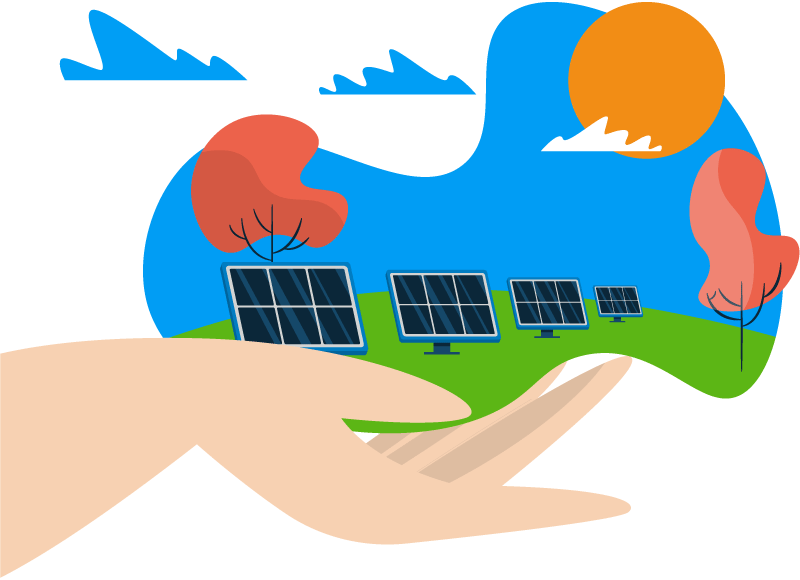
The following general impacts have been found associated with the risks:
Negative impacts derived from climate change that have a detrimental effect on the company, such as the gradual increase in temperature, which produces an increase in energy consumption due to need for additional refrigeration, which can lead to an increase in OPEX or CAPEX.
Negative impacts derived from natural disasters (hurricanes, flooding, etc.) that can affect systems and infrastructure thereby impacting service continuity.
Negative impacts related to legal, technological, market or reputational aspects, derived for example from the transition towards a low-carbon economy; or the adaptation to climate change, for example due to scarcity of resources.
After analyzing the risks associated with climate change, it was determined that the financial implications could be in the range of COP 7 billion before establishing the necessary measures to mitigation or control them.
According to the analysis of each risk, different methods have been defined, including operating controls to reduce the materialization of risks; an example applied in the operation is the search for alternative sources of energies that help control the high energy costs in times of drought or natural refrigeration projects in the facilities, guaranteeing the adequate temperature of the sites even with high temperatures derived from climate change.
Energy
(GRI 302-1, 302-3, 302-4, 302-5)
Telefónica Movistar has a global corporate strategy for energy and climate change, with quantitative objectives that are not only compatible with network expansion and service quality, but will also help to be more competitive.
Responsible energy consumption is where the Company has the greatest opportunities to realize savings and efficiencies through the implementation of energy efficiency projects, self-generation, and consumption of alternative and cleaner energies.
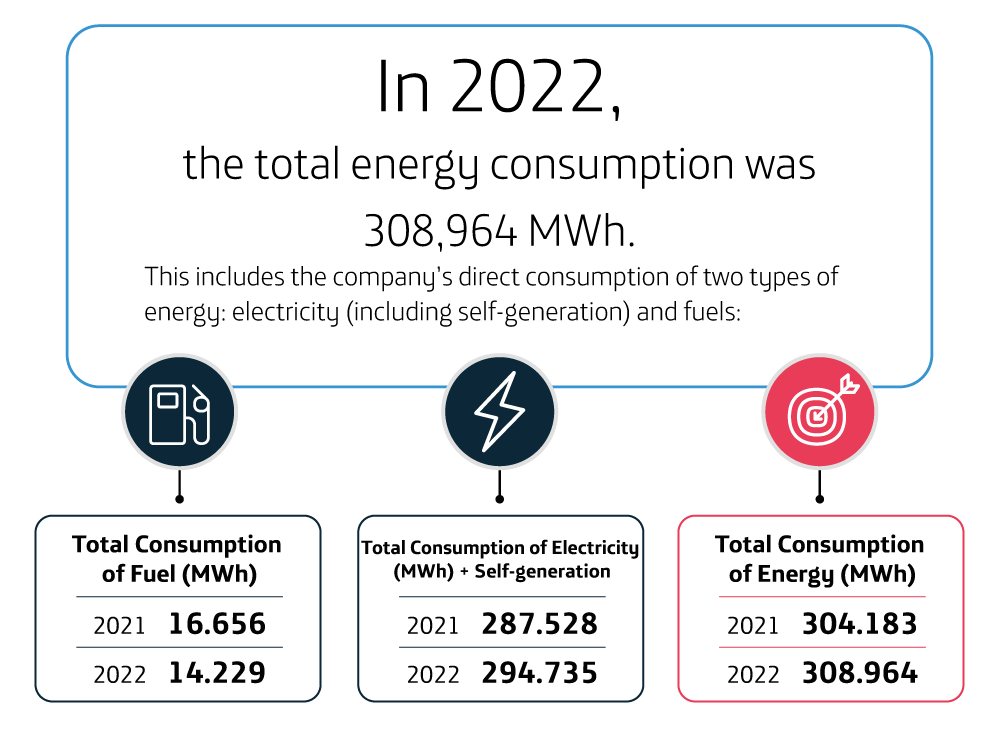
In 2022, electricity consumption was 294.7 thousand MWh for the entire operation, of which 276,624 MWh is to consumption in own facilities and 18,112 MWh in third-party facilities. Of this total, thanks to the commitment and promotion of efficiency and responsible consumption initiatives, the total consumption of energy from renewable sources was 240 thousand MWh, that is, 87% of the energy consumed in own facilities and 82% of the total consumption of the entire operation, including third-party sites.
The company also continues with the development of self-generation projects, which in 2022 generated 707 MWh; in 2023, it is expected that with the entry of the second phase of the PPA On Site Project, self-generation will increase by more than 1 GWh per Year from photovoltaic (solar) systems.
The company’s total electricity consumption is distributed as follows: 88% is for technical management, 6.9% datacenters, 4.3% sales, and 0.8% offices.
Fuel is another source of energy used and provides mainly as a backup when the electric power supply is interrupted or deficient. In 2022, consumption was 1,2 million liters of Diesel/Diesel, that is a 19% reduction compared to 2021, which is equivalent to more than 283 thousand liters. This was provided thanks to the implementation of equipment with greater efficiency and to the Diesel/Diesel consumption controls of partners and suppliers in the supply to the network nationwide.
Over the last few years, the company has also made great efforts to reduce fuel consumption in the vehicle fleet, using more and more fuel-efficient vehicles and improving fleet management through the use of M2M solutions. Although consumption in 2022 was higher compared to 2021, it should be noted that this is the result of the reactivation and mobility processes since 2021 following COVID pandemic lockdown and isolation measures.

Energy intensity
In 2022 energy intensity by unit of traffic was 47.74 MWh/Pb reflecting the Company’s commitment to energy reduction by ensuring nationwide network deployment.


Emissions
(GRI 305-1, 305-2, 305-5)
Based on the annual analysis of energy consumption, the carbon footprint of all the Group’s operations is calculated using the methods of the GHG Protocol methodology applied to scopes 1 and 2. To calculate the indicator, the 1.5ºC scenario of the Paris Agreement was used as a baseline calculation, and the result of the 2015 consumption for different topics such as energy, fuels, refrigerant gases, among others. The gases included in the calculation are CO2, CH4, N2O, HFC.
For the effects of the calculation, the emissions factors used as reference are those established for Colombia by the Mining-Energy Planning Unit (UPME, for the Spanish original) each year. It should be noted that starting in 2021 the CO2 emission factor for electricity in Colombia was modified from 127.69 grCO2eq/ KWh to 203.9 grCO2eq/ KWh, which produced an increase in the final calculated amount.
The company conducts an independent verification process of energy and emissions data, in order to obtain high-quality information on the energy consumed by the Company and of the greenhouse gases emissions from its activities into the atmosphere. This has enabled the identification of improvements in the processes and transparent management of energy and carbon dioxide.
Similarly, achievement of the global energy and climate change goals is assessed through this quantification and verification.
Scope I+II emissions in 2022 totaled
17,886 Tons.
Thanks to the implementation of an ambitious
energy efficiency program at the company
has
decreased carbon emissions by 67%
since 2015 – the year from which the Company began to calculate its carbon footprint inventory and established the climate action commitments – that is, it has prevented the emission of more than 36.4 thousand tons of CO2.
This is the performance of the annual
emissions of Scope 1 and 2:

Waste
(GRI 306-1, 306-2, 306-3, 306-4, 306-5)
To preserve the telecommunication networks in optimal conditions, it is required preventive and corrective maintenance in the technical, administrative, and commercial areas, having a direct relationship with the activities of the organization and the products and services, both ordinary and hazardous, due to the use of different supplies such as filters, batteries, oils, refrigerant gases, paints, lights, spare parts, among others. For these activities, the company has defined different operational controls and manages waste in accordance with legal environmental requirements.
In 2022, 1,282 tons of waste were managed, mostly from the operation and maintenance of the network, the electricity backup systems and works for the deployment of infrastructure. The 93.5% of the waste is Non-Hazardous and 6.5% of the waste is Hazardous and due to its characteristics it is not recycled in the operation, but it is used as raw materials for other production processes.
In 2022 waste generation decrease compared to the
previous year of 81%, and this corresponds to the decrease in the
generation of Other nonhazardous waste, where 99% are
construction and demolition waste.
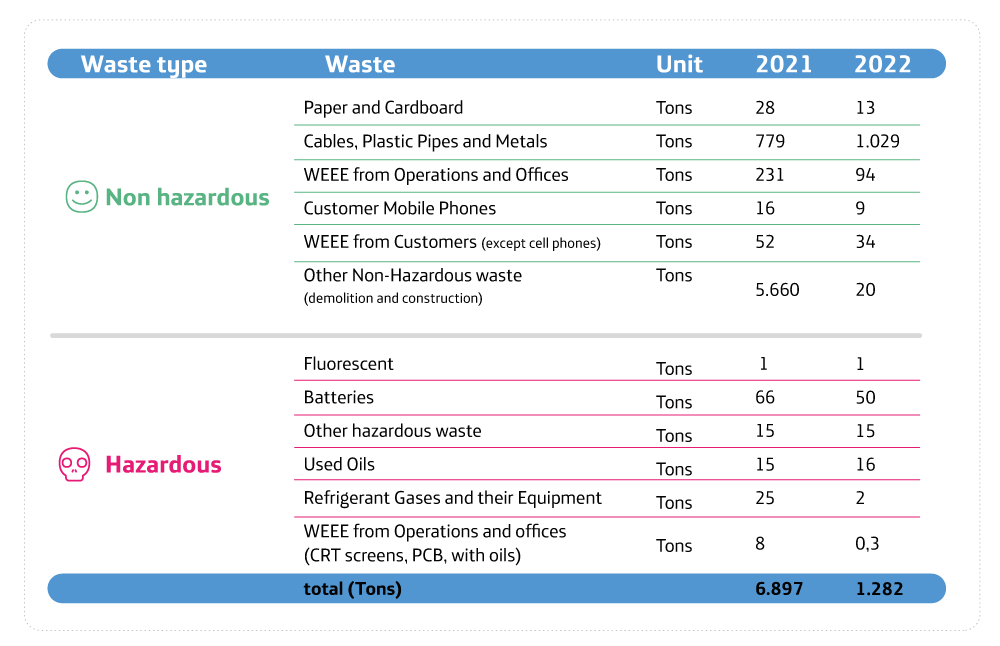
The Company has the support of specialized and duly authorized partners for the adequate management, handling, transport and disposal of hazardous and special waste. No waste treatment is performed at the Company’s facilities, but through authorized operators at their respective plants. Specialized task groups have been established to perform monthly monitoring of waste generation and adequate disposal by the Partners, taking into consideration the type of waste, its adequate disposal, the waste management operators used and the type of treatment, always ensuring that waste management is conducted in accordance with applicable regulations and with adequate operating controls. In this manner, comprehensive control and traceability of the data is performed covering the entire cycle from waste generation to final disposal.
The Company uses the GReTel tool to control waste
data at the national level, which enables inputting
the information of each type of waste defined and
generated by the organization, and in turn the
platform receives the information on waste treatment
by the Partners or other Company areas. Monthly
follow-up is made on the waste generation and adequate
disposal by the Partners through specialized work
tables, which guarantees that the waste management is
performed within the framework of the applicable legal
requirements and the implementation of operational
controls adequate to the management; in this way, the
company controls and traces in an integral manner the
data from the generation to the final disposal of the
waste.
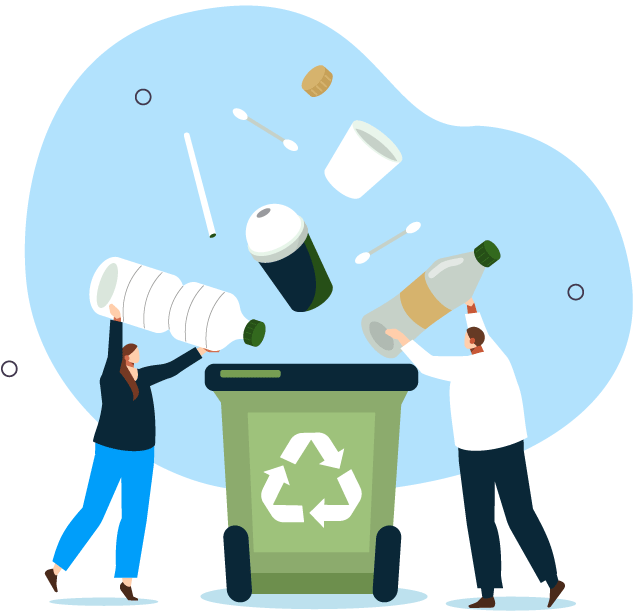
The Company has established several waste recycling measures, such as the refurbishing of modems and decoders returned by customers, meaning these cease to be waste electrical and electronic equipment and re-enter the life cycle of the broadband service. In 2022, thanks to this mechanism, a total of 365,927 devices were recycled, equivalent to 183 tons.
At the same time, preventive and corrective
maintenance has been optimized in the Company, reducing the frequency of such maintenance and,
therefore, the generation of waste, more efficient,
maintenance-free equipment with a longer useful life
has been purchased, so that less waste is generated
from operations. The company also has a specialized
manager for handling waste electrical and electronic
equipment so that most of the electronic components
can be recovered and used for other production
processes outside the organization.
These initiatives accounted for 96.9% of waste recycled in 2022, while 3.1% was treated in other ways, such as landfill and incineration, and disposal in safety cells.

Although waste management depends on the authorizations granted in the waste management providers’ environmental licenses, the Company has a priority waste management chain, where the first treatment must be focused on reuse, recycling or use.
In cases in which this measure cannot be implemented due to access conditions to the area, type or characteristics of the waste, may opt to use the method of disposal in a landfill cell and/or landfills and incineration. Thanks to this, the Company has identified and assessed the companies (waste management providers) that meet all the legal environmental requirements and whose permitted activities include the use or recycling of waste as a priority.
Sustainable Mobility
During 2022 we continued to work towards a more sustainable organization, which is why we have been working on several fronts in order to achieve our proposed goals, the most relevant of which are listed below:

- The Comprehensive Mobility Plan - PIMS was approved by the District Secretary of Mobility for the 2022- 2023 period, transforming Colombia Telecomunicaciones S.A ESP BIC an organization that is always thinking about transforming the mobility habits of its employees, improving their quality of life and contributing to more sustainable mobility in the city.
- We participated in the car-sharing pilot conducted by the District Secretary of Mobility for three months and were recognized as the organization with the best travel experience for women with a 48% participation rate.
- We facilitate the sustainable mobility of our collaborators through parking for electric cars with their respective charging station, as well as
- We implemented the carpooling initiative since the month of August, which was very well received by our employees, at the end of December, we had 705 users in the Try My Ride app, who shared more than 4,500 routes, of which 2,700 were carpooling routes. All of this focused on the SDGs.
- We implemented many free maintenance journeys for the employees’ own bikes and scooters, to ensure that their mobility is very safe for more than 100 employees in Bogota.
- We continued with our bike and scooter sharing program where we had more than 700 users who made 18 thousand trips covering a distance of 246 thousand of kilometers, which contributed to the reduction of 61 Tons of CO2 and 361 happiness days due to the decrease of traffic in 2022.
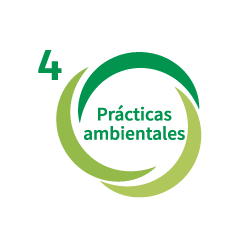
Environmental assessment of suppliers
Within the prioritization of suppliers and contractors in relation to environmental issues, we have defined various follow-up and verification parameters according to the services provided to Telefónica Movistar related to the life cycle of the organization, rather than discriminated by significant environmental issues.
Audit Management
In December 2022 and as a result of the follow-up audit by the certifying entity AENOR have been identified various strengths for the EMS, such as:
- Telefónica as a BIC Company, a commercial company of Benefit and Collective Interest Company that voluntarily intends to combine the advantages of its commercial and economic activity with specific actions to promote the welfare of its workers, contribute to the social equity of the country and the protection of environment.
- Diverse and effective mechanisms for interaction with stakeholders such as: Stakeholders Panel; Working Groups; Communication and Sustainability; as well as implementation of Actions to meet their needs and expectations such as: Energy efficiency projects and renewable energy plans, Technology changes (equipment more efficient), Modem and decos replacement; Policy.
- Consistent and practical approach to SUSTAINABILITY, evidenced by actions that contribute to the reduction of GHG – reduction of carbon footprint and atmospheric emissions, such as the Movistar en BICI (Sustainable Mobility) Program with electric and conventional bicycles, company scooters for employees, 500 parking spaces and bicycle maintenance service and restrooms; Car Sharing Initiative with more than 600 registered users and 150 people who share their vehicles.
- Energy Efficiency Project – Photovoltaic Selfgeneration at CT DELICIAS.
- Gretel Platform: Telefónica Group’s web-based application for contractors to access and upload to the Gretel tool, including information on the environmental manager used, waste and quantities.
- Environmental Indicators Dashboard that provides effective planning and follow-up on the fulfillment of strategic initiatives, plans, objectives and environmental indicators. It includes the SYGRIS system.
On the other hand, it did not identify any NonConformities and findings are aimed to improve the internal processes of the EMS, all of this enabled the Environmental Management System re-certification.
Additionally, in 2022 the company conducted 31 audits: internal, assurance and third party audits, equivalent to 103 audit journeys, to identify timely improvements to the Management System and its suppliers, ensuring the plan of actions and strategies designed to solve the identified deviations.
Telefónica has a training program to strengthen knowledge and training in environmental issues for employees and partners. In 2022, we held 282 meetings, equivalent to 26,700 training hours, on environmental issues such as: Telefónica’s Environmental Management, ISO 14001:2015 Standard, reinforcement of operational controls defined in the company for the mitigation of environmental impacts, Emergency Plans, Management and classification of waste, control of fauna and flora in network operations, pruning and logging management and outdoor visual advertising.
The company provides its personnel with an intranet site to access the company’s environmental information, Environmental Policy, management programs, indicators, objectives, environmental performance results, tips, environmental topics, and impacts, among others.
Precautionary Principle
The Company complies with the precautionary principle set forth in the national regulations according to the limits of people’s exposure to electromagnetic fields associated with installed telecommunications infrastructure (Decree 195/2005 and ANE Resolution 754/2016). Likewise, it is in compliance with the national provisions related to environmental issues (Law 99/1993) when the deployment is carried out in environmentally protected areas.

